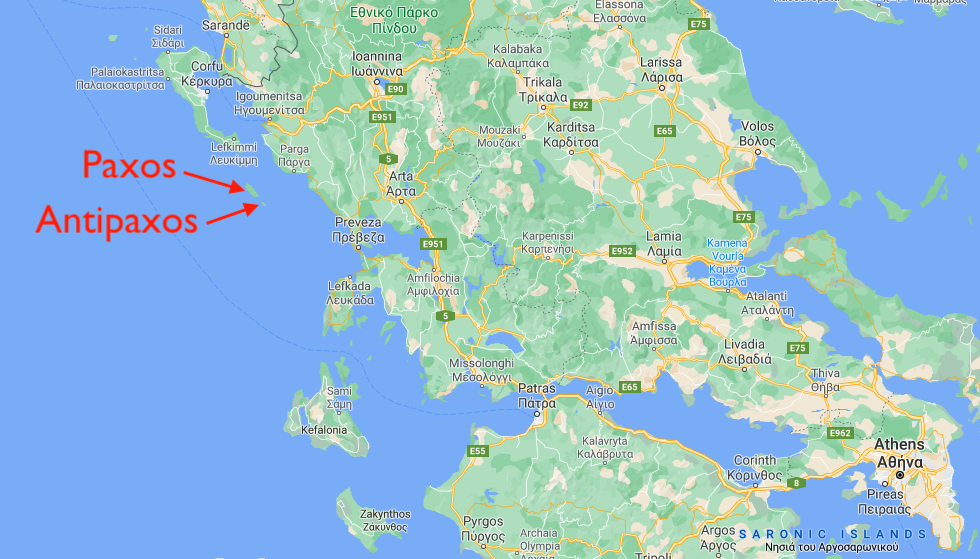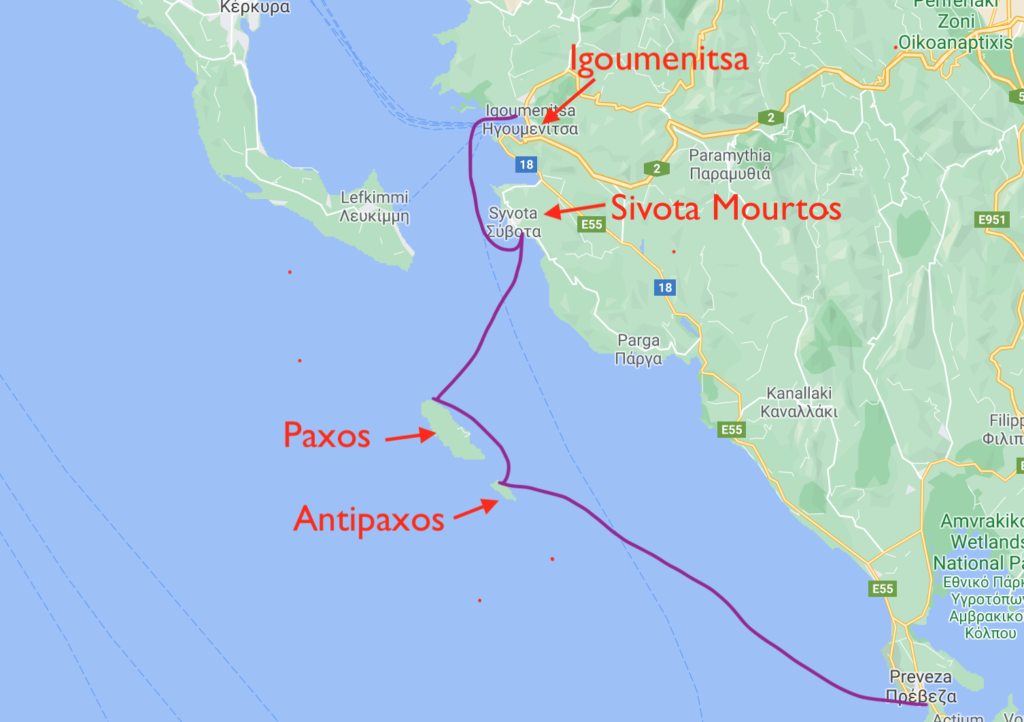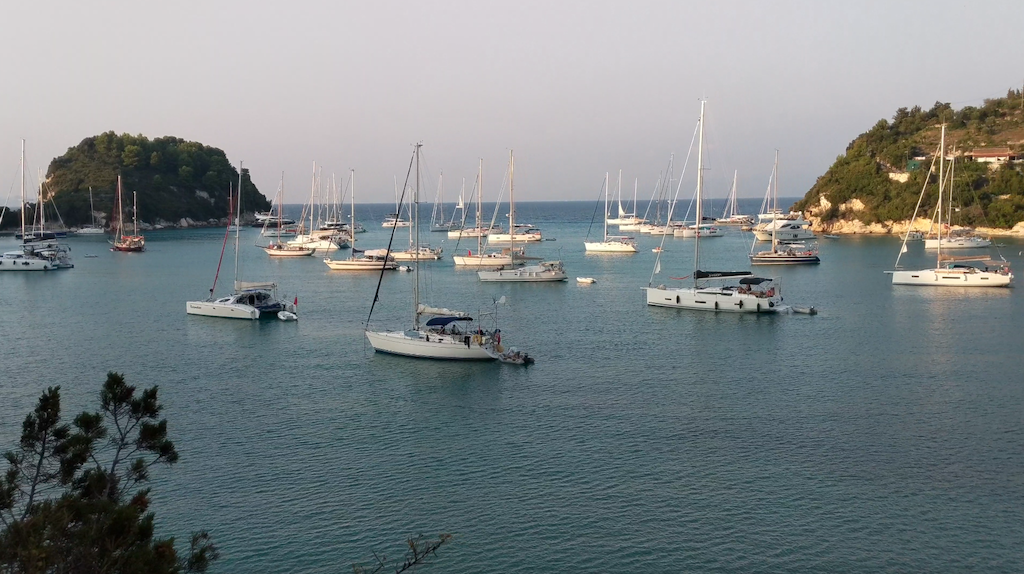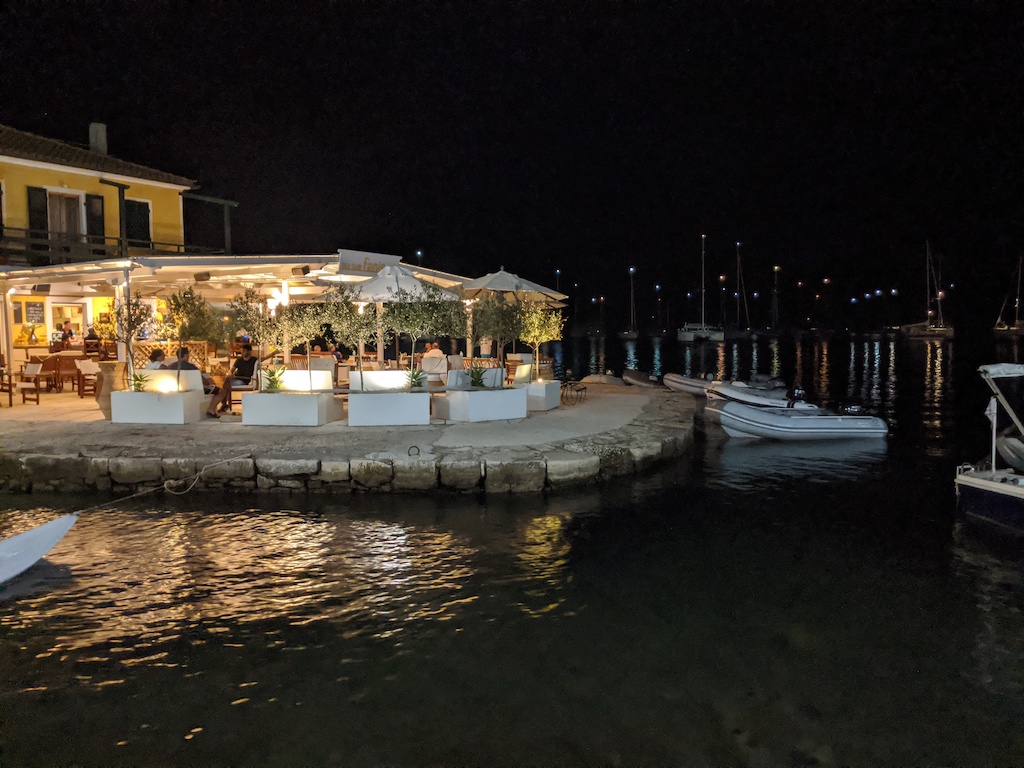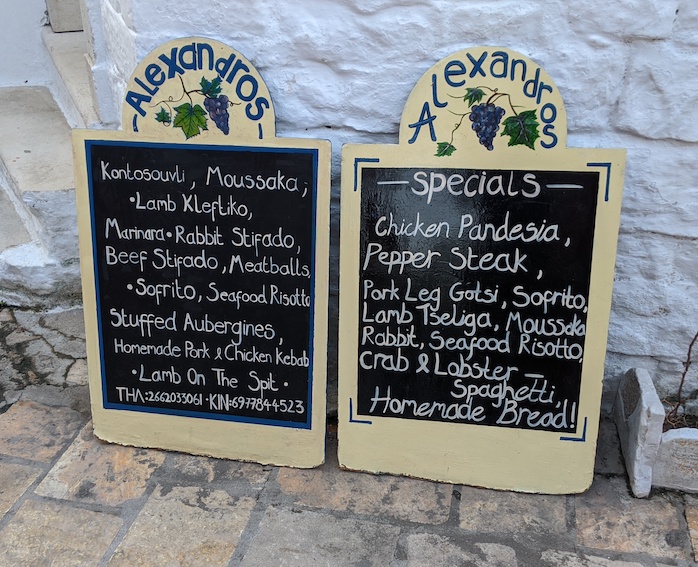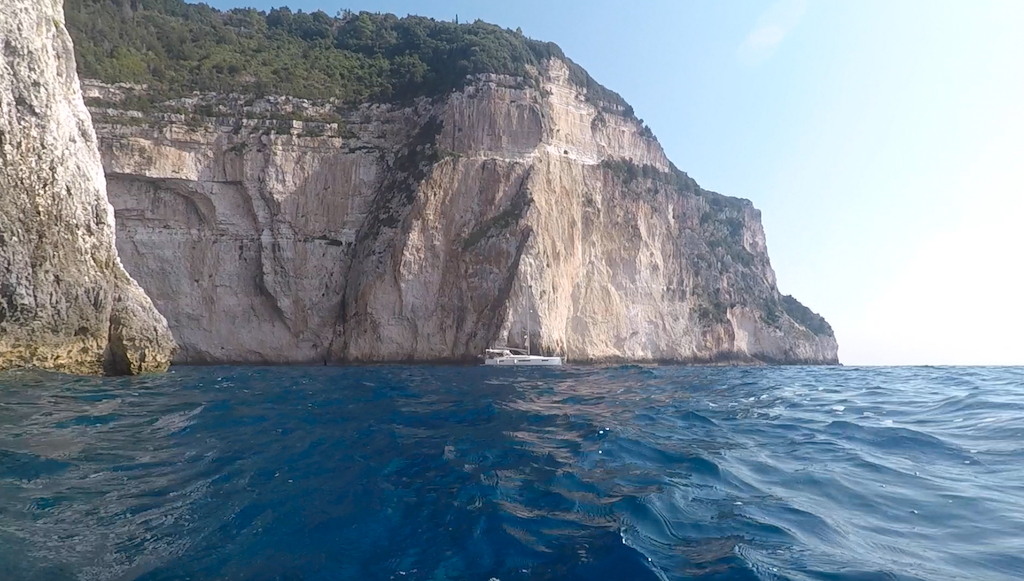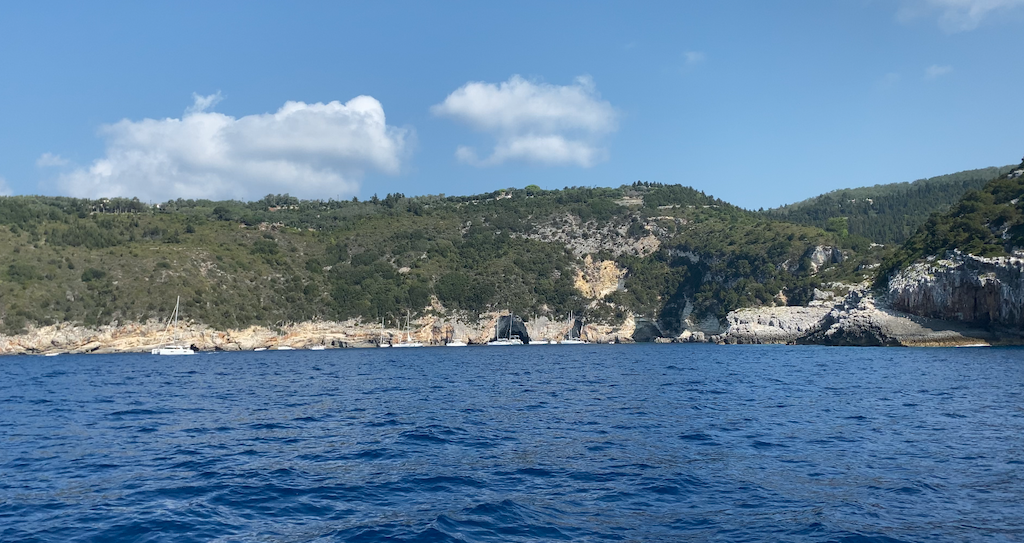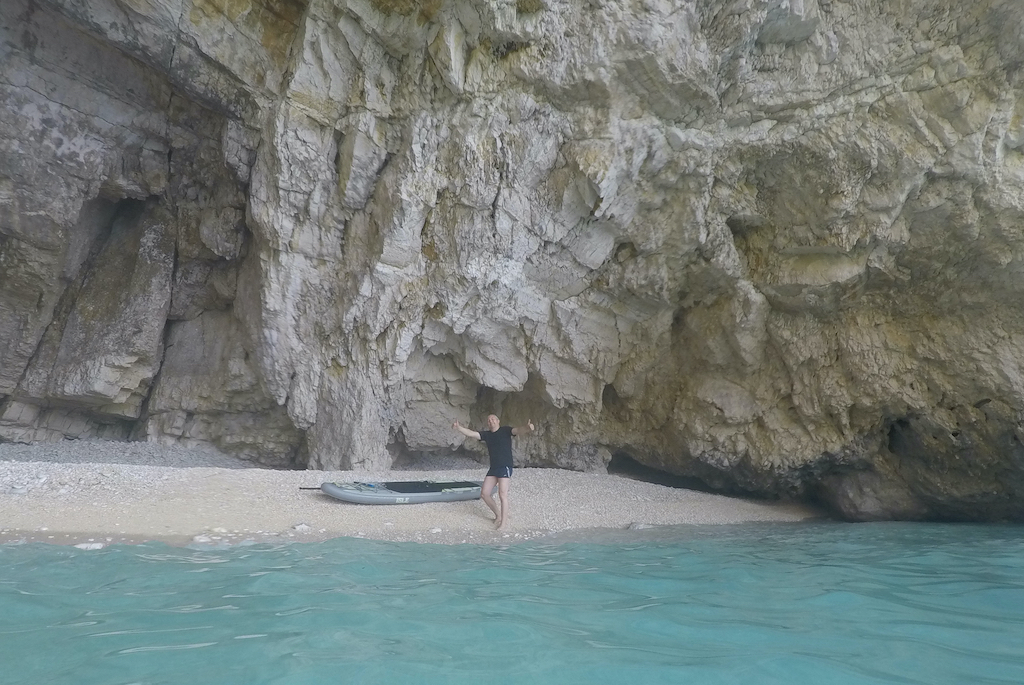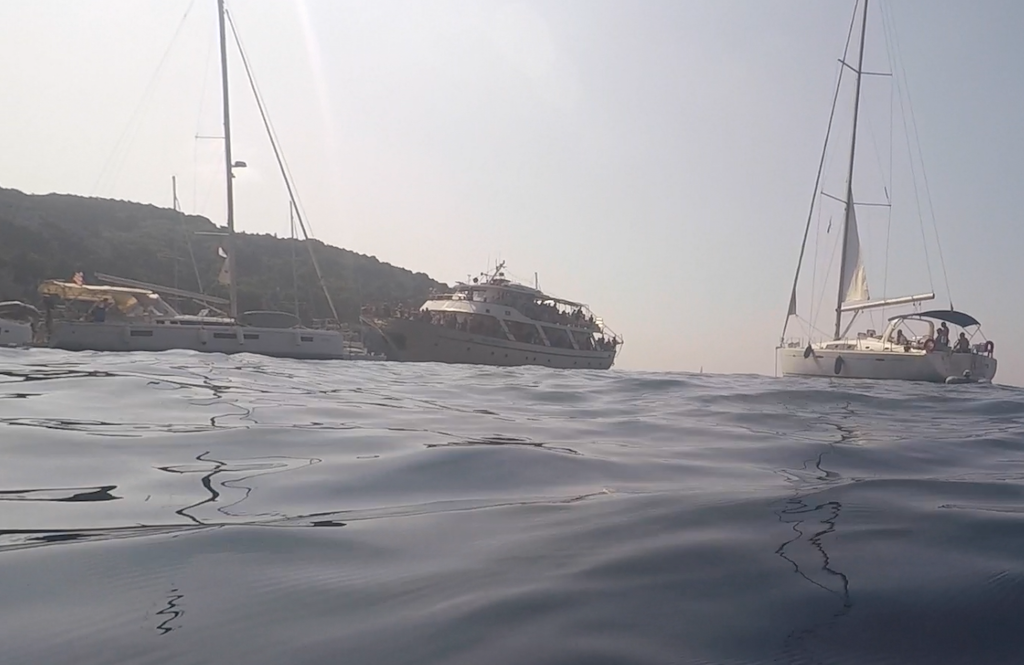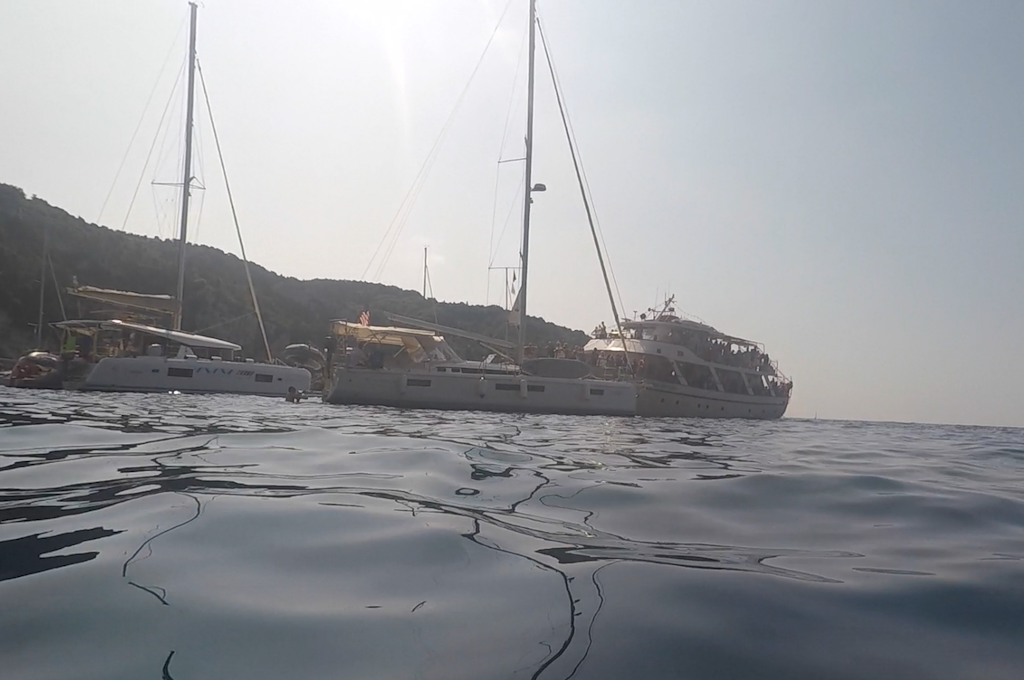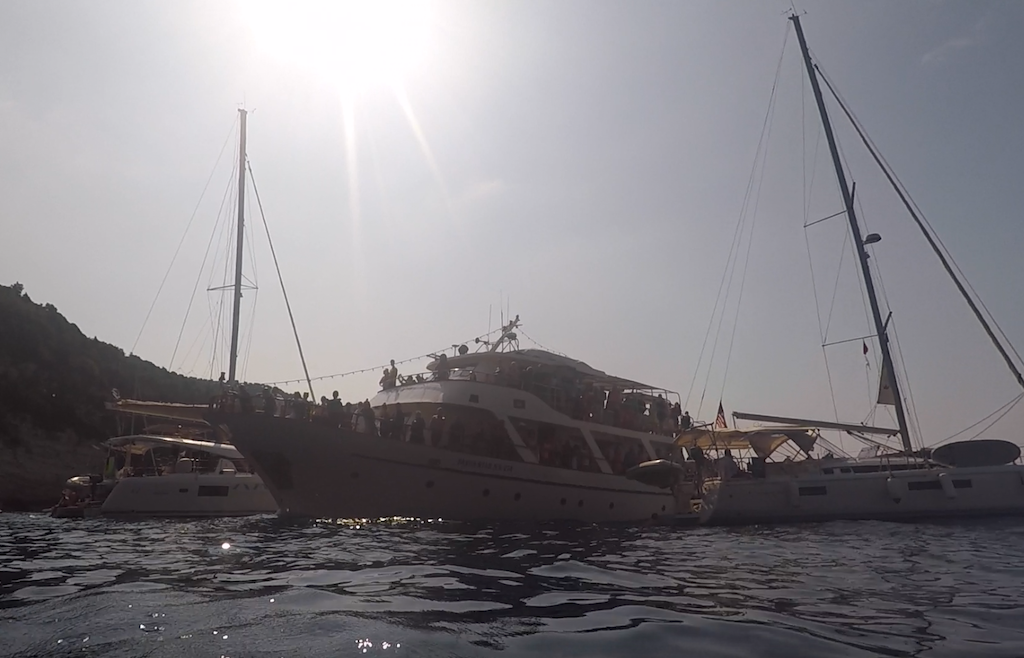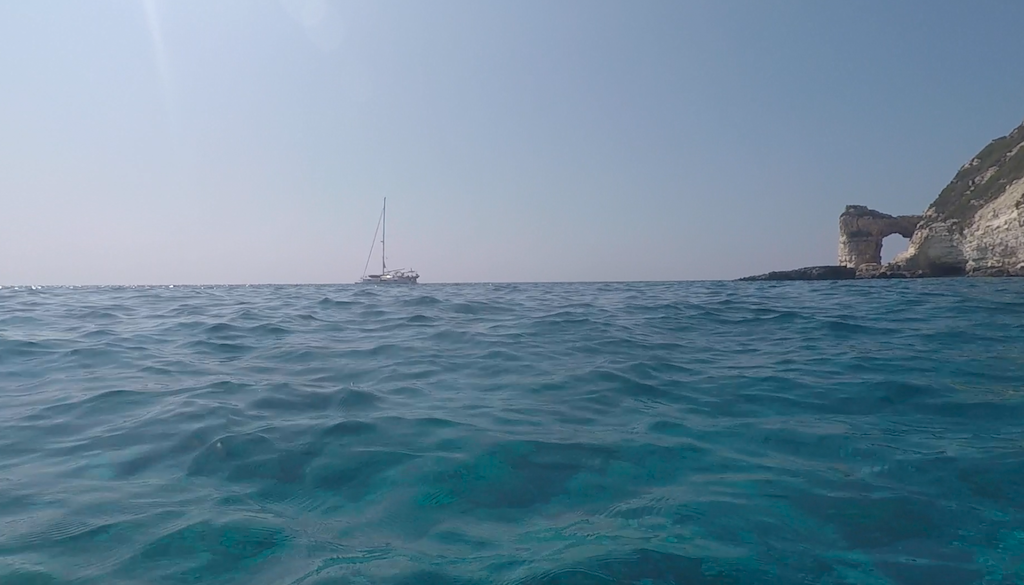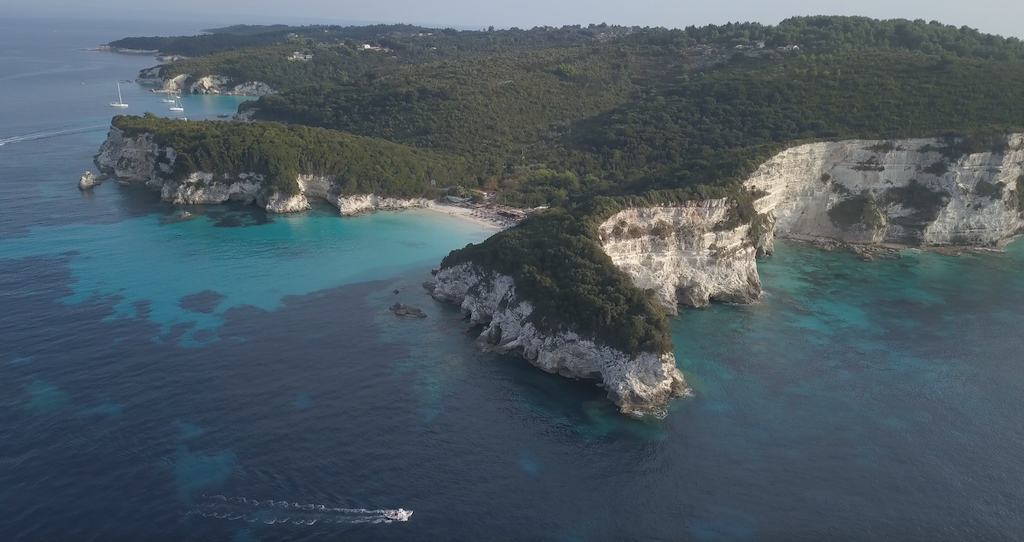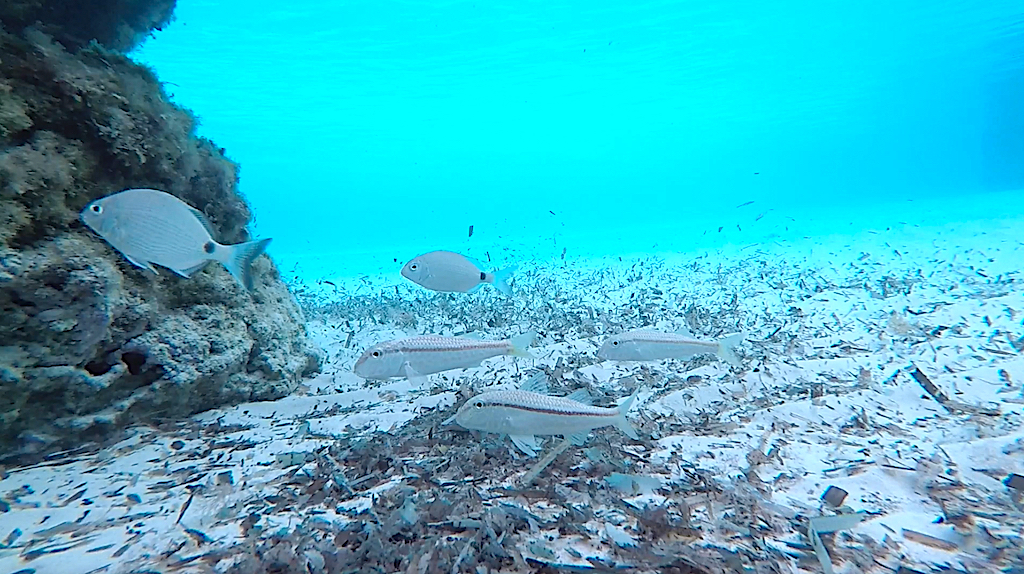You’ve probably heard it before. “There’s no such thing as bad weather, only inappropriate clothing.” This statement was credited to the explorer Sir Ralph Fiennes. Generalized, it’s the philosophy that if you get into trouble, it’s your own fault for not taking the time to prepare. For new sailors, hikers, campers and the like, it’s something you often learn the hard way and have to begrudgingly accept down the road as valid. Of course, one can’t deny the chance factor – seemingly random, unfortunate events that wreak havoc. But with hindsight, often many of these could be avoided, or at a minimum, prepared for through scenario planning. I’ve written before about how Karen and I will try to think through various bad events, of which there is plenty of material to draw from on a cruising sailboat, and consider how we would best respond. We’ll often look back at a bad event and puzzle out how we could have been more prepared. It’s not exactly like a Mykonos discotheque conversation, but thinking through the worst, and preparing for it, makes the other 99% of the time more relaxing and enjoyable. We are by no means perfect at scenario planning, but we try to remind ourselves to do it on a regular basis.
In the shoulder seasons of the Med – September and October, and to a lesser extent March and April – the normally tranquil waters turn suddenly furious with rage on enough frequency to warrant your close attention. Coincidentally, September and October is a popular time for our friends to come visit, after the summer fun is winding down in the more northern latitudes of where they live. So, we often have the added challenge of showing our friends a good time while keeping all of us and Sea Rose safe. Pedro was our only guest this summer, and we had already dealt with the ferocity of the medicane just before his arrival. Clearly troubled atmospheric tempers were brewing. As we enjoyed our last evening in beautifully, peaceful isolation at Antipaxos, we debated the best strategy for a forecasted storm building to the west, estimated to arrive in the morning. Our anchorage was a gem for swimming and snorkeling and flying drones, but it was no place to be during a blow. We also had to eventually get Pedro back to Preveza, on the mainland, for his flight home. The earlier we raised anchor in the morning, the better our odds of avoiding the worst of it.
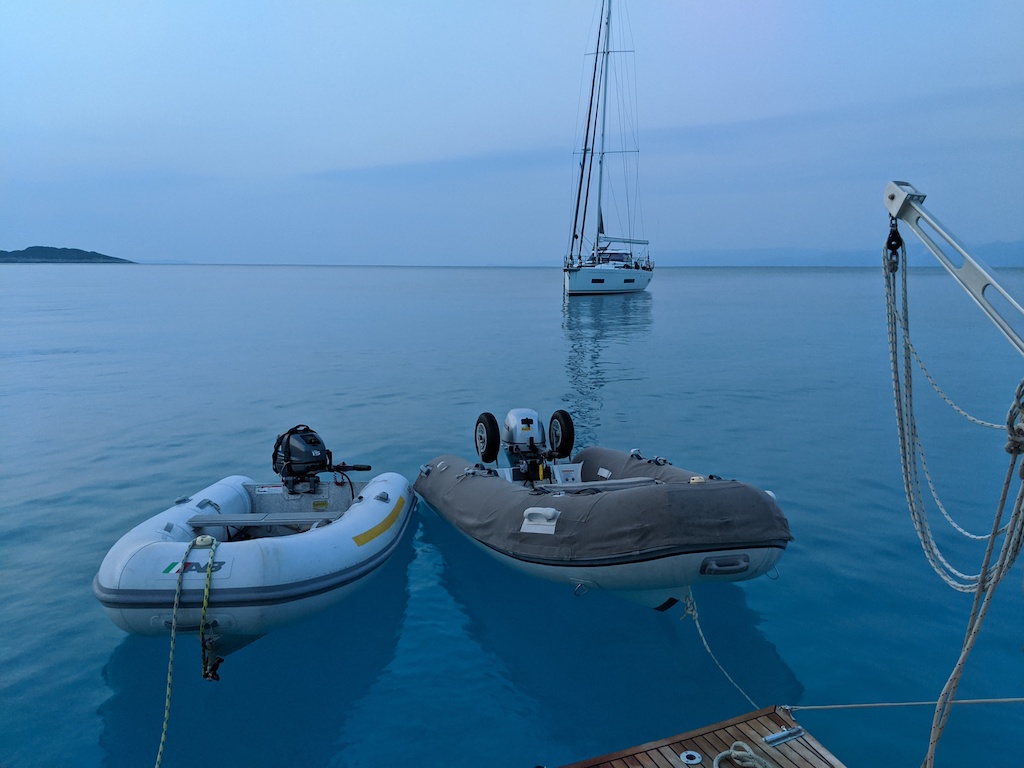
In the morning, cobalt clouds overlaid the sky from horizon to horizon and an edgy surge of agitated water was finding its way into our anchorage. The halcyon days of summer were fading quickly from memory. Anchors were freed from their watery home and both Paloma and Sea Rose headed off under engine power for the entrance to Preveza, 30 miles distant. The wind direction was not ideal – nearly on our bow – and due to its building strength, was giving us a challenge to motor up one crest and down the backside. In these shallower coastal waters, the period of the waves can be short, which means more crests to climb each minute, killing our boat speed through the water. I hate motoring in a sailboat as much as a power boater probably hates sailing. We decided to bear off course slightly so that we could raise and reef sails, and together with the assistance of the engine, could essentially tack up wind against the big waves. It’s a cheat for sure. Any racer would scuff at such an act, but then again, we have cold beer in the fridge and tasty food regularly coming out of the barbecue — scarce things on most racing boats!
Soon, we saw a dark squall line approaching from the East. Paloma, with her bigger engine and longer waterline, was ahead of us and getting hit first, healing way over. Trails of sea spray were racing downwind in sinewy white lines across the water. Then we saw and heard lighting. The wind always peaks our interest, but as soon as Zeus starts getting in on the act, nothing else matters for us. Lightning bolts were striking all around, and the anemometer went from 15, 20, 25 to 30 in rapid succession.
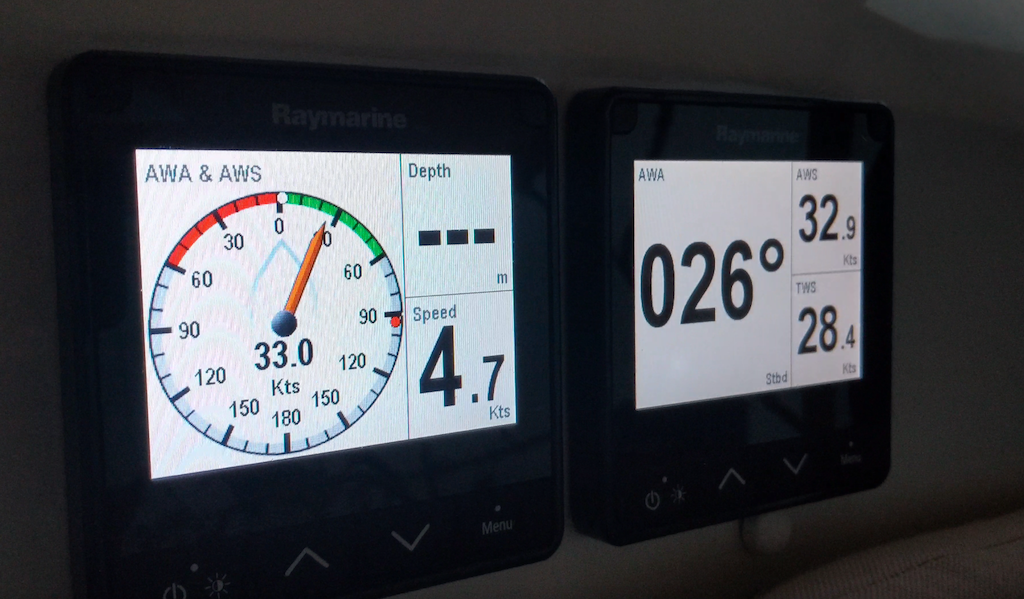

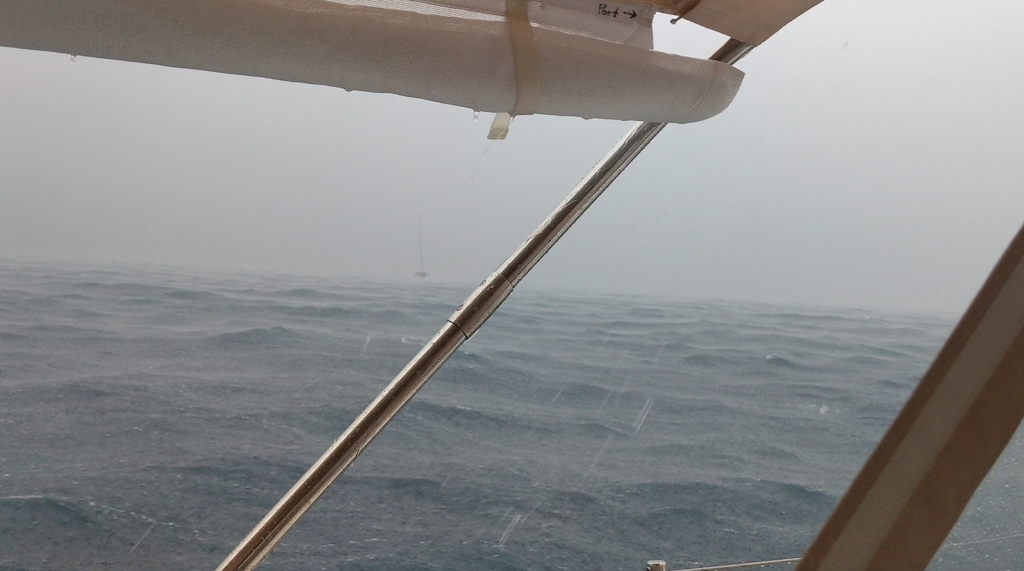
I turned Sea Rose into the wind to ease the impact, and to reduce the pressure on the paddle boards on the foredeck. The paddleboards were for sure a liability up on deck, something we had not fully thought through in our preparations. They should have been deflated and stowed. The wind briefly peaked at 42 knots. It eased slightly and I turned back closer to our original course. Paloma disappeared from view with the heavy rain and sea spray. Another two squall lines came through with the same high winds, heavy rain and lightning. If it wasn’t so stressful, I’d have time to chuckle at how dry the summer had been overall. We sailed from the very eastern part of Greece, for 2 1/2 months, without a drop of rain until we arrived in the Ionian. And now it was like mother nature was making up for lost time.
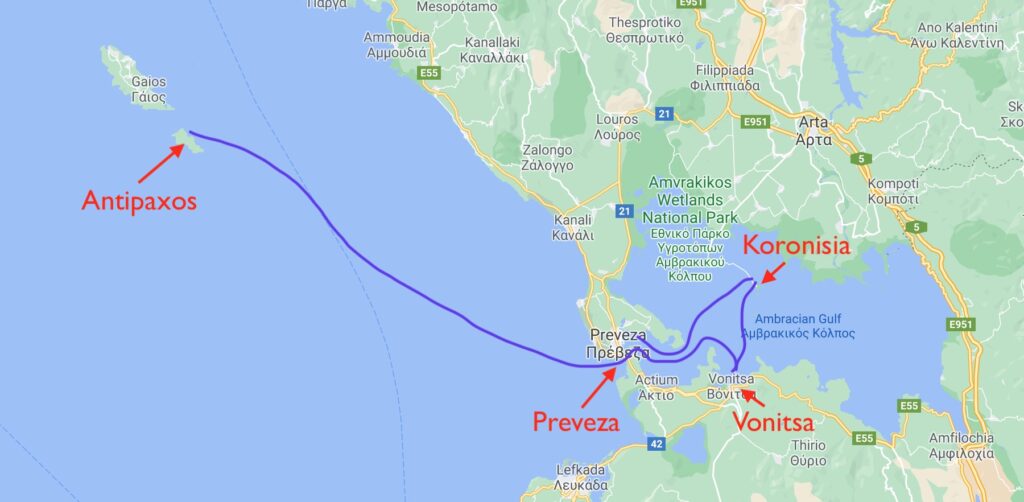
The cloud ceiling started to rise and the rain diminished to a steady drizzle. We didn’t take any chances and pushed the engine to get us to the Preveza entrance channel as quick as possible. Preveza exists as a home base or sorts for boating in the northern Ionian. There’s a handy airport, a sizable town with everything one might need – boating and otherwise – and three large marinas for hauling and winter storage. We had picked one – Aktio Marina – as the winter home for Sea Rose, and Pedro was flying out of Preveza in a couple of days, so it felt good to be local to where we would wrap up the season. There was no longer a need to worry about time commitments and schedules.
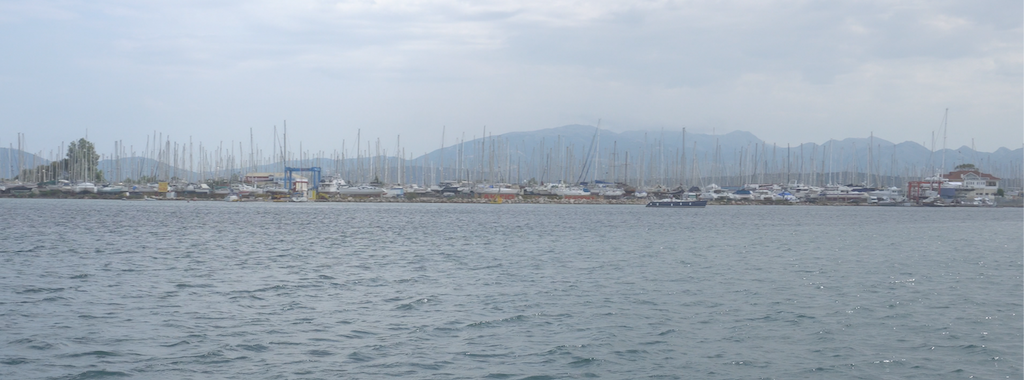
Still, there’s plenty to see in the area. Preveza is a kind of a mini Gibraltar entrance to a large inland sea, technically the Ambracian Gulf. The cruising guides don’t focus much on this area, so we’d be using our own wits to find the most interesting spots. We pushed on under light winds to the town of Vonitsa on the southern shore, attractive initially by its protected anchorage behind a long peninsula. We found out later that the peninsula was actually a skinny island connected to the mainland by means of a low arched walking bridge. Charming!
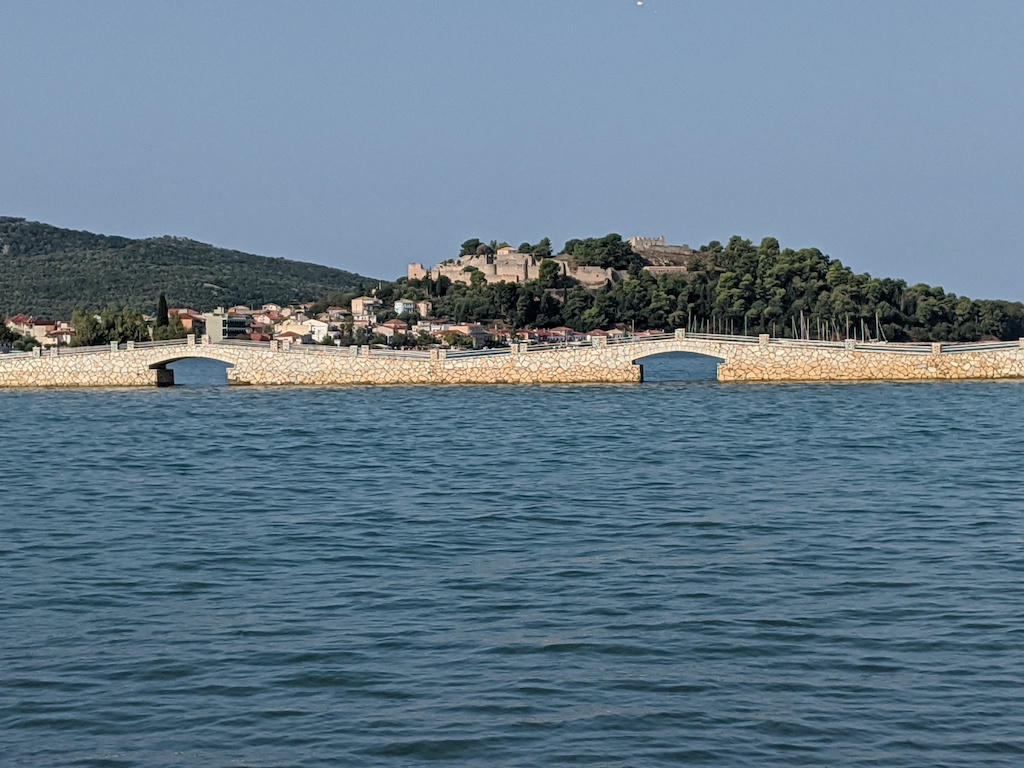
Vonitsa was a locals town; the few other cruising sailboats that joined us were the side show. Here, villagers shopped and strolled their infants and met their school children at the siesta break. We did find a Venetian fort on the top of the local hill, built on top of a Byzantine fort, with a commanding 360 degree view of any invading armies and navies. Our invasion was of the civilized form, paying our 3 euros to wander the grounds, and maybe help the town cover a portion of the electric bill to show off the fort’s grandeur at nightfall.
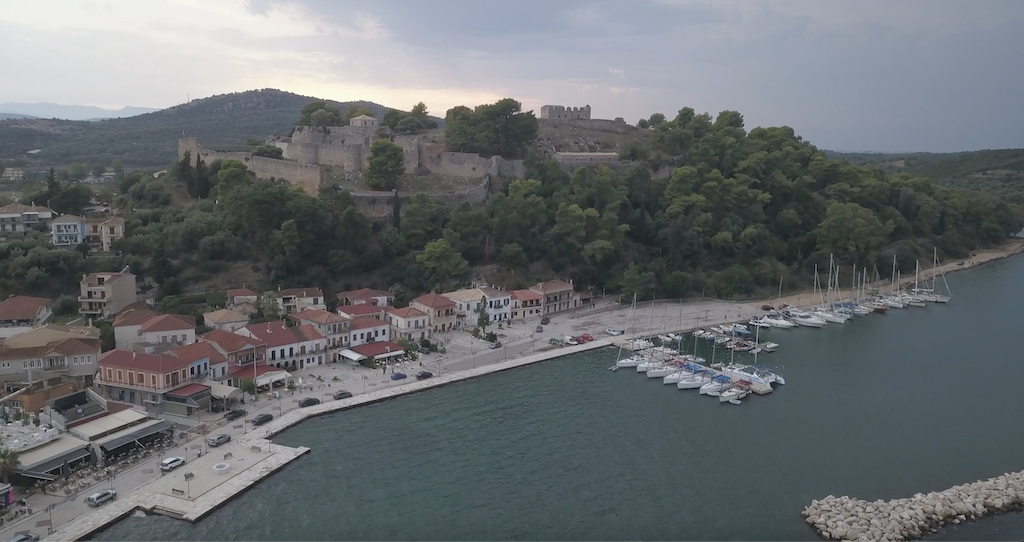
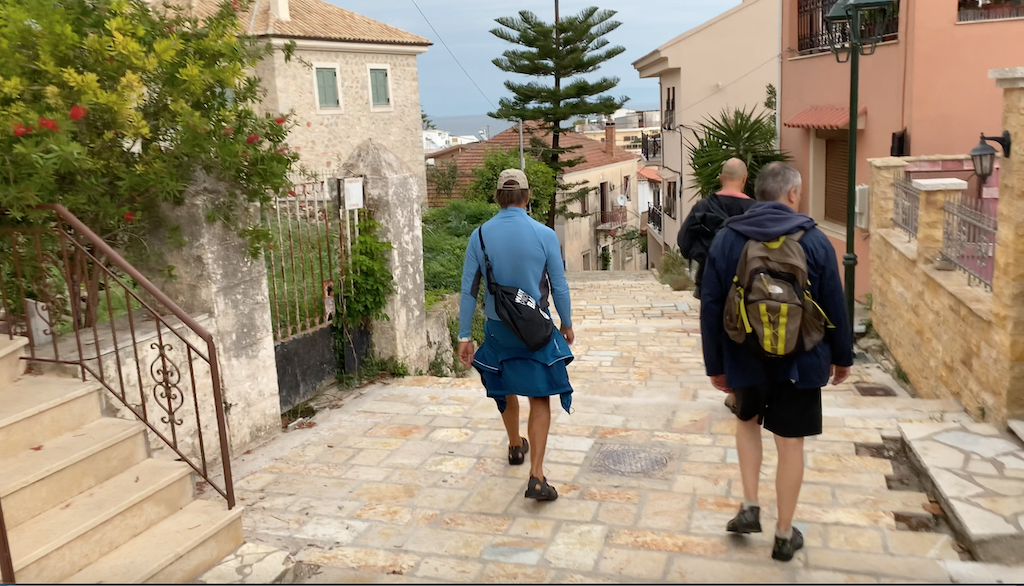
With our early start from Antipaxos, the nasty squalls and the trip into the Gulf, it was an early night for all of us.
The morning broke quietly with water as flat as a mountain lake. Indeed, in its peaceful solitude, with mountain peaks in the distance, this area reminded me of Montenegro’s Bay of Kotor. We set our sights on a cluster of small islets visible across the Gulf from Vonitsa, a spot called Nsis Vouvalos. As we inched our way in, we needed to keep a close eye on the depth sounder, as the water was too murky to see the bottom. We had a consistent 0.6m under the keel – the downside of a shallow inland sea. We could have probably made it work for the night, but caution prevailed as we continued north to the town of Koronisia, tucking in behind a headland from the building westerly afternoon breeze. With both Sea Rose and Paloma settled on our anchors, we decided on a picnic lunch back at the islets of Nsis Vouvalos, this time using Theo’s low draft dinghy. Karen spotted a beach landing filled with small sea shells and flotsam. Mankind was not a frequent visitor to this spot despite its striking views and quietness. And I mean real quiet. The kind where you can hear your breath. It is so rare to find a place these days with zero background noise.
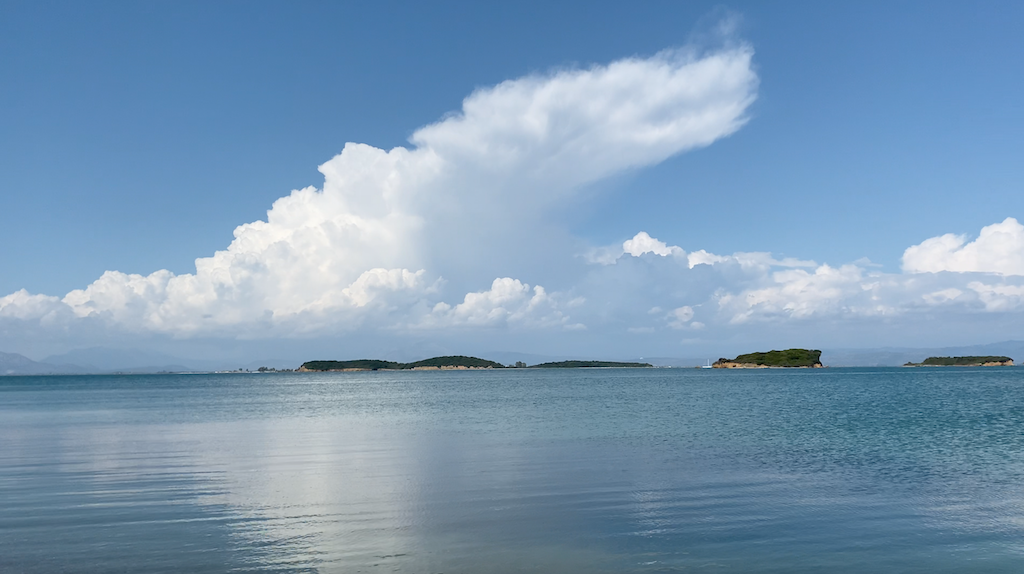
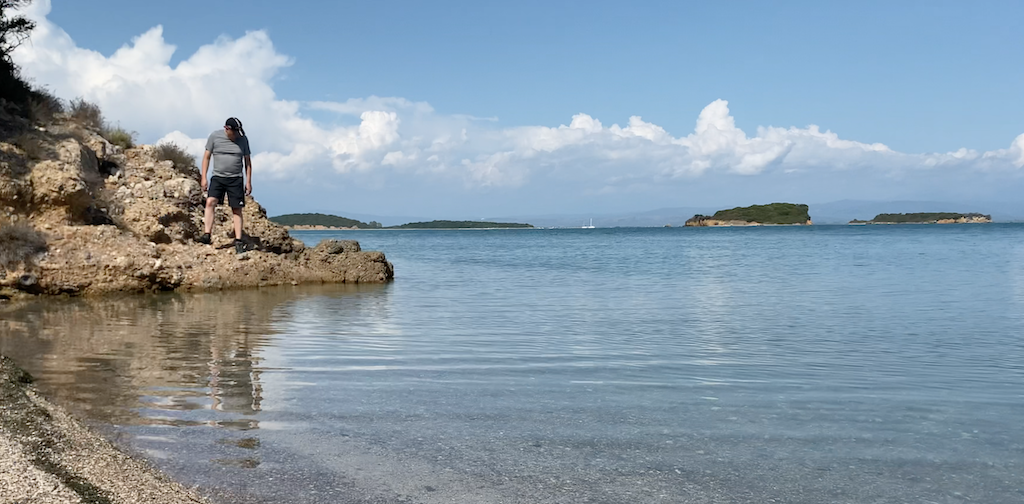
We took the dinghy ashore to Koronisia in the morning, finding a long path along the shore and low bluffs, the kind of path that thins out enough to make you wonder if you’ve lost your way. The path circled a large interior lagoon that to our surprise was the home for several flocks of flamingos. Greece still seemed to have a few surprises up its sleeve. Eventually we found the village of Koronisia, with one small waterfront cafe, requiring a stop by my caffeine-tempted friends.
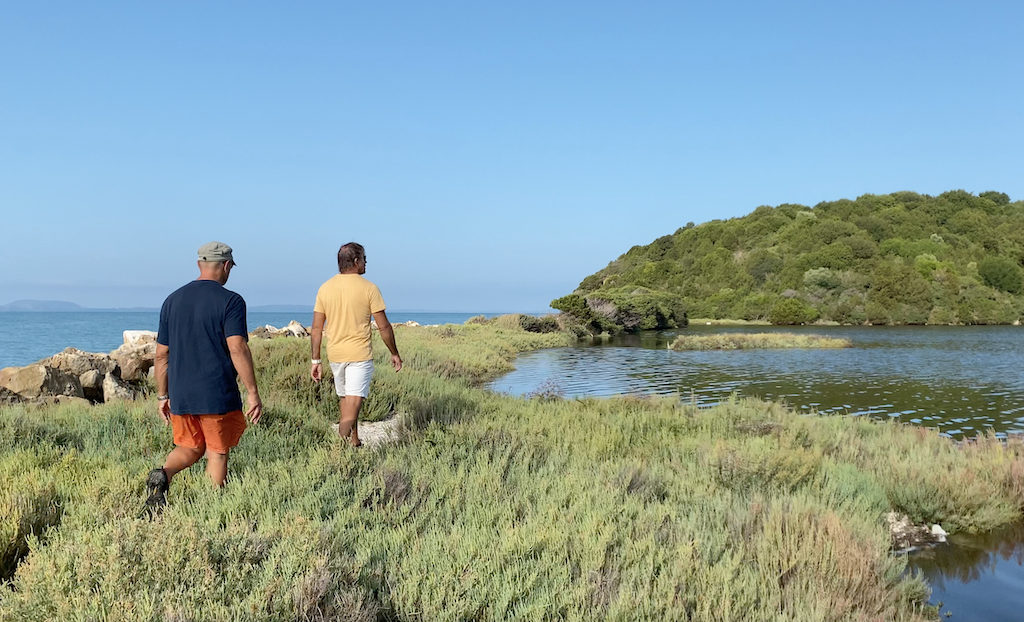
Shrimp is the main attraction here, when it is in season. Instead, we found a half-filled town pier, and lots of stray dogs to accompany us back to the dinghy. Koronisia was not taking the economic hit of Covid very well, or perhaps its struggles started long before that. Throughout the summer, we had been watching closely to understand the impact of the pandemic, but Greece is a tricky read. So much of the economy and infrastructure came to a stand still back in the early 2000’s. But brace yourself, when they get into their stride, this country is going to come back with gusto; I can feel it in the passion of their citizens.
It was time to wrap up our brief tour of the Gulf of Ambracian, head back to Preveza, and start prepping for shut down. These last few days in the Gulf had been the perfect antidote for the stormy weather earlier. A little work, a little play. The perfect balance!



